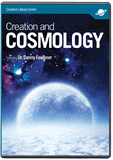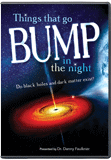
Neutrinos Break Light-Speed Limit
Is the neutrino guilty of breaking the cosmic speed limit?
News Source
- Nature: “Particles Break Light-speed Limit”
After two years of collecting high-tech “radar gun” measurements of neutrino speeds, CERN researchers have decided to appeal to the world for a verdict. According to Einstein’s theory of relativity, nothing can exceed the speed of light as measured in a vacuum. All of modern physics and many of the physical constants that accurately describe the physical world depend on the constancy of this value. Yet scientists involved in OPERA (Oscillation Project with Emulsion tRacking Apparatus) have apparently caught neutrinos exceeding the cosmic speed limit about 16,000 times.
Neutrinos are electrically neutral subatomic particles. They can pass through planets without any hindrance or significant interaction, and they have hardly any mass
Neutrinos are electrically neutral subatomic particles. They can pass through planets without any hindrance or significant interaction, and they have hardly any mass. Because they are almost massless, they should be able to travel at nearly light speed. But beams of neutrinos fired from the CERN high-energy physics laboratory near Geneva along a 730 kilometer underground pathway have arrived at Gran Sasso Italy 60 nanoseconds too soon. Since the distance should be accurate to within 20 centimeters and the equipment is supposed to be accurate to within 10 nanoseconds, the neutrinos appear to be superluminal.
If true, these results don’t just open up a dream world for sci-fi aficionados delighted to overthrow the laws of cause-and-effect in favor of theoretically possible time travel.1 The entire basis for our Einstein-based physics and the predictable observations it provides would be overthrown.
But before we get too carried away, we should note the OPERA physicists question the results themselves. As CERN’s research director Sergio Bertolucci muses, “We all like the idea of travel in time, but it would be very difficult.”2 He explains, “When an experiment finds an apparently unbelievable result and can find no artifact of the measurement to account for it, it’s normal procedure to invite broader scrutiny. If this measurement is confirmed, it might change our view of physics, but we need to be sure that there are no other, more mundane, explanations. That will require independent measurements.”3 Therefore, OPERA researchers have asked the physics world to scrutinize their work to see if they can confirm the results or discover a loophole that readmits neutrinos to the world of cosmic law-abiders.
This apparent cosmic violation is also at odds with other neutrino travel data. 1987 observations of a supernova confirmed that light and neutrinos emitted by the exploding star arrived at a Japanese laboratory within the same interval of time. Even though the neutrinos appeared to win the CERN light-race by a fraction of a nose (only 20 parts per million too fast), the same excess speed magnified over the distance to that supernova would multiply to a three year difference, according to calculations by Drexel University astrophysicist Dave Goldberg. In other words, if neutrinos could really exceed the speed of light, the neutrinos from the supernova should have arrived three years before the photons which allowed us to see the explosion!4
Actually, the MINOS (Main Injector Neutrino Oscillation Search) project in Minnesota got results similar to OPERA’s back in 2007, but that team decided there was too much uncertainty in the detector’s exact position to be sure of the measurement’s significance. That lab, and others, will now set about trying to reproduce or refute OPERA’s results. And they will do so with OPERA’s blessings. As OPERA coordinator Antonio Ereditato says, “We want just to be helped by the [physics] community in understanding our crazy result—because it is crazy.”5
Therefore, if an observation appears to violate all the observations which have gone before, the first thing we should question is the observation itself.
So what lessons should we as Christians be taking from all this? First of all, we should applaud the honesty of the CERN researchers for declaring that their results should be taken with a huge grain of salt. When something violates a well-established principle—that which is observable or known from a reliable eyewitness account—we should avoid blithely accepting it. The physics world is exercising discernment and observing sound scientific principles. In science, scientific laws are discovered by making repeated observations. Therefore, if an observation appears to violate all the observations which have gone before, the first thing we should question is the observation itself.
Some of our readers have asked if this result provides an answer to the distant starlight problem by proving variability in the speed of light. However, all the distant starlight models which rely on a variable light speed suffer from some problems with regard to standard physics. Actually, the big bang proponents struggle much in their efforts to explain their own light-travel problem (the horizon problem) even within the massive time frame they postulate. Astrophysicist and creationist Dr. Jason Lisle has published6 a model explaining distant starlight’s transit time which is consistent with the 6,000 year age of the universe provided by biblical chronology and does not violate the laws of standard physics.
Dr. Lisle adds, “This experiment does not in any way support the notion that the speed of light is variable or that any particles can actually travel faster than light. It is unquestionably the result of some tiny miscalibration of the equipment, or an un-accounted-for variable, and does not suggest any new physics. Indeed, all experimental evidence to date is consistent with Einstein’s conclusion that the (round-trip) speed of light in vacuum is constant. The tiny deviation is definitely suggestive of experimental error. The results should not be used to suggest that the standard view of physics is wrong.”
Some have suggested that Answers in Genesis is inconsistent in pointing to the errors of uniformitarian thinking while maintaining that God created the physical universe and put certain physical laws and reliable constants in place. However, the uniformitarian worldview maintains that all things have continued at the same rate without any supernatural or catastrophic events to alter them. Namely, uniformitarianism excludes the Creation by God and the global Flood.
Moreover, there is a difference between uniformitarianism and uniformity. Uniformity of physical laws in the universe reflects an underlying orderliness due to God’s sustaining power.
However, uniformitarian thinking inconsistently insists that life evolved by random processes in non-living matter, clearly a violation of the law of biogenesis—a scientific principle of biology which holds that life only comes from life.
As Bible-believing Christians, we should realize that the Word of God provides God’s eyewitness account of His Creation—the time when He supernaturally created the universe, initiated time, and created the physical scientific laws by which the universe operates. The speed of light question here is not one of any biblical consequence per se, but the discernment shown by the scientists involved is a fine example we should emulate when it comes to measuring those things we hear authoritatively reported, measuring all things by the yardstick of God’s Word.
Further Reading
For More Information: Get Answers
Remember, if you see a news story that might merit some attention, let us know about it! (Note: if the story originates from the Associated Press, FOX News, MSNBC, the New York Times, or another major national media outlet, we will most likely have already heard about it.) And thanks to all of our readers who have submitted great news tips to us. If you didn’t catch all the latest News to Know, why not take a look to see what you’ve missed?
(Please note that links will take you directly to the source. Answers in Genesis is not responsible for content on the websites to which we refer. For more information, please see our Privacy Policy.)
Footnotes
- Jason Palmer, “Light Speed: Flying into Fantasy,” BBC News, September 23, 2011, http://www.bbc.com/news/science-environment-15034414.
- Ibid.
- Laura Smith-Spark, “Scientists: Particles Appear to Travel Faster than Light,” CNN, September 24, 2011, http://www.cnn.com/2011/09/23/world/europe/switzerland-science/index.html.
- Ker Than, “Particles Moved Faster than Speed of Light?,” National Geographic, Spetember 24, 2011, http://news.nationalgeographic.com/news/2011/09/110923-neutrinos-speed-of-light-particles-cern-physics-einstein-science/.
- Ibid.
- See “Distant Starlight—The Anisotropic Synchrony Convention” and “Anisotropic Synchrony Convention—A Solution to the Distant Starlight Problem.”
Recommended Resources

Answers in Genesis is an apologetics ministry, dedicated to helping Christians defend their faith and proclaim the good news of Jesus Christ.
- Customer Service 800.778.3390
- © 2024 Answers in Genesis




